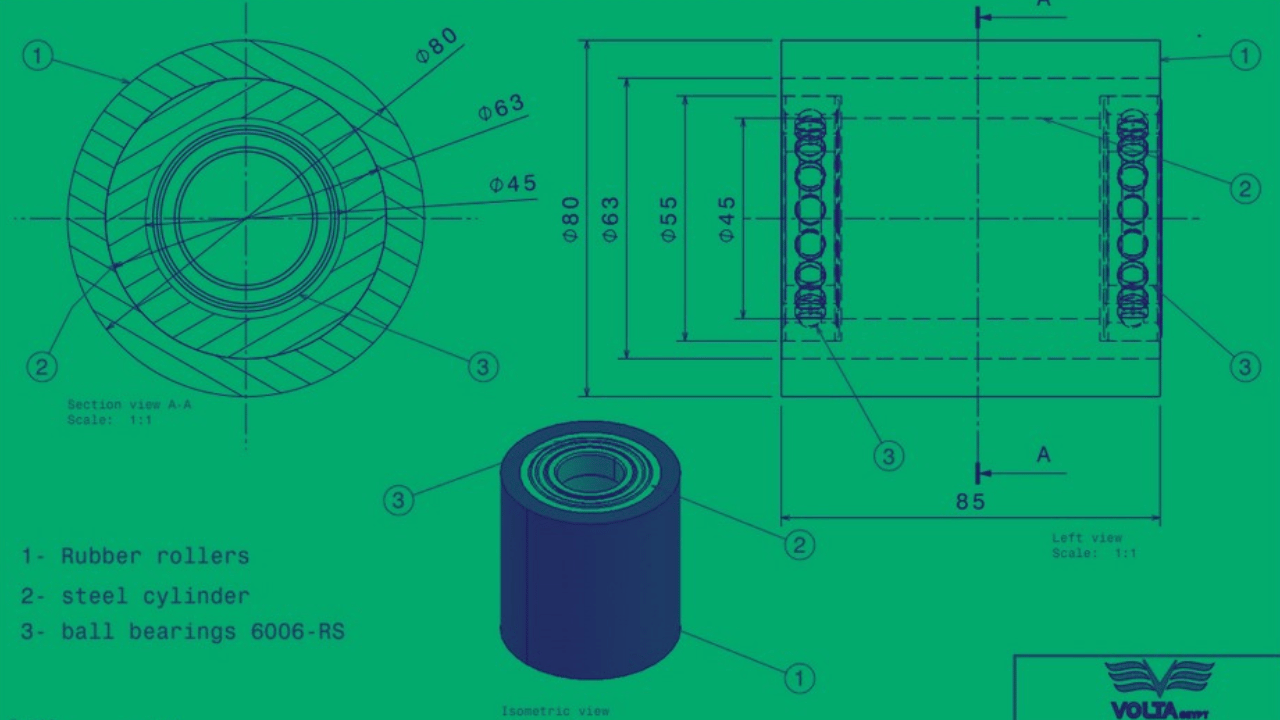In the intricate world of manufacturing, designing custom rubber parts is a unique blend of art and science. This comprehensive guide aims to navigate you through the crucial aspects of design to ensure functionality, durability, and cost-effectiveness in your custom rubber parts.
Understanding the Basics of Rubber Material
Rubber's versatility makes it a popular choice in various industries, but understanding its types is key. For instance, if your product will be exposed to the outdoors, consider UV-resistant materials to prevent degradation. Synthetic rubbers like Nitrile or Neoprene are excellent for applications requiring oil and chemical resistance. The correct material choice not only enhances performance but also extends the lifespan of the product. If you are interested in learning more - click here to read about the different types of rubber.
.png) Understanding Rubber | Quick Tips
Understanding Rubber | Quick Tips
- Consider UV-resistant materials for outdoor products to prevent degradation.
- Use synthetic rubbers like Nitrile or Neoprene for oil and chemical resistance.
- Match material choice to enhance performance and product lifespan.
Designing for Functionality
The primary focus should be on the part's intended function. For parts that will undergo frequent movement, prioritize flexibility and fatigue resistance to ensure they maintain their shape and effectiveness over time. Additionally, it’s crucial to consider how the rubber will react to environmental factors such as temperature fluctuations and humidity, which can significantly affect performance.
Design Functionality | Quick Tips
- Prioritize flexibility and fatigue resistance for parts with frequent movement.
- Account for environmental impacts like temperature and humidity on rubber.
- Ensure the design meets the specific functional requirements of the application.
Optimizing for Durability
Design choices greatly influence a part's durability. Reinforcements in areas of high stress can prevent tearing and extend the part's life. When designing, consider the optimal thickness needed for functionality and durability; too thin might lead to wear, while too thick can be wasteful and unnecessarily costly. A well-thought-out design balances these aspects to achieve the best performance.
Durability | Quick Tips
- Reinforce high-stress areas to prevent tearing and improve longevity.
- Balance thickness for durability without unnecessary waste or cost.
- Design with an eye towards enduring real-world use and conditions.
Cost-Effective Design Strategies
Balancing high-quality design with budget constraints is crucial. Simplify your design where possible to reduce the complexity of the mold, which in turn can lower production costs. Prototyping, especially with methods like 3D printing, can be a cost-effective way to test and refine designs before investing in expensive production molds.
.png) Cost Management | Quick Tips
Cost Management | Quick Tips
- Simplify designs to reduce mold complexity and production costs.
- Use prototyping methods like 3D printing for cost-effective design refinement.
- Seek a balance between high-quality design and budget limitations.
Aesthetic Considerations
While functionality is paramount, aesthetics play a significant role, especially in consumer-facing products. Consider using colors to differentiate between product lines or for branding. Textured finishes not only enhance the product's grip but can also be used to hide manufacturing blemishes, making the product more appealing while maintaining its functionality.
Aesthetic | Quick Tips
- Use colors for branding or differentiating product lines.
- Incorporate textures to enhance grip and hide manufacturing marks.
- Align aesthetics with functionality for consumer appeal.
Compliance and Standards
Adhering to industry standards and regulations is non-negotiable. It's important to stay abreast of the latest regulations specific to your industry. Additionally, with the growing trend towards sustainability, considering eco-friendly materials can enhance market appeal and ensure compliance with environmental regulations.
Compliance and Standards | Quick Tips
- Stay updated on industry-specific regulations and standards.
- Consider eco-friendly materials for sustainability and market appeal.
- Ensure design complies with relevant safety and quality regulations.
Utilizing Advanced Design Tools and Techniques
Leveraging modern design tools like CAD and 3D modeling offers precision and versatility in design. Collaborating with engineers and designers can optimize the design for manufacturability, saving time and resources in the production phase.
 Advanced Design Tools | Quick Tips
Advanced Design Tools | Quick Tips
- Use CAD and 3D modeling for precision in design.
- Collaborate with engineers and designers for manufacturability optimization.
Collaborating with Manufacturers
A close collaboration with your rubber manufacturer can make a significant difference. Clear communication of your requirements and constraints, coupled with an openness to their expert feedback, can streamline the design process and ensure the feasibility of your project.
Rubber Collaboration | Quick Tips
- Maintain clear communication of requirements and constraints.
- Be open to manufacturers' expert feedback for streamlined design.
- Ensure the manufacturer understands the end-use and specifications of the part.
Conclusion
Designing custom rubber parts is a complex yet rewarding process. Every decision, from material selection to aesthetic detailing, contributes to the part's success. By balancing functionality, durability, and cost, while keeping in mind compliance and aesthetic appeal, your custom rubber parts can meet the highest standards of quality and performance.
Invitation for Further Guidance
Should you require more detailed advice or a consultation for your specific rubber design project, our team is here to help. Reach out to us to turn your innovative ideas into successful, market-ready products.